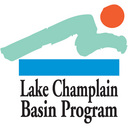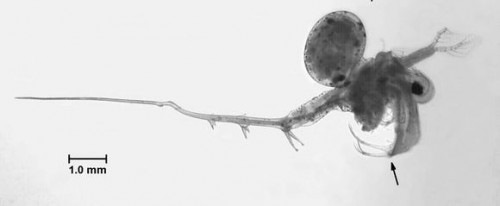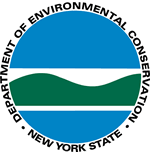 Grand Isle, Vt – The Lake Champlain Basin Program’s 2012 State of the Lake and Ecosystem Indicators Report was released today. The report, produced every 3-4 years, informs citizens and resource managers about Lake Champlain’s condition and provides a better understanding of threats to its health and opportunities to meet the challenges ahead.
Grand Isle, Vt – The Lake Champlain Basin Program’s 2012 State of the Lake and Ecosystem Indicators Report was released today. The report, produced every 3-4 years, informs citizens and resource managers about Lake Champlain’s condition and provides a better understanding of threats to its health and opportunities to meet the challenges ahead.
“We use scientific data to determine what kind of progress is being made on the management of Lake Champlain water quality and habitat health,” said Bill Howland, LCBP Program Manager. “Again, in 2012, we share both good and not so good news, depending on which issue and which lake segment is being discussed. Certainly the Lake is not meeting phosphorus concentratios targets, but each jurisdiction remains diligent and active in their efforts to decrease loads.”
The public is encouraged to request a copy of the report to learn more about Lake Champlain’s health. Highlights include:
Water Quality
- Lake Champlain’s nonpoint source phosphorus target loads and in-lake concentratios are still too high.
- Phosphorus trends in some tributaries are improving, such as the Pike River which flows through Quebec and Otter Creek in Vermont.
- Some of the Lake Champlain embayments are generally meeting their phosphorus targets including Cumberland Bay, Burlington Bay, Shelburne Bay, South Lake B.
- 2011 spring and fall floods boosted nutrient levels in most sections of the Lake to the highest annual average since the initiation of the Lake Champlain monitoring program in 1992.
Fish and Wildlife
- Data collected in 2011 for sportfish in Lake Champlain reveal substantial declines in mercury levels in the tissue of walleye, lake trout and yellow perch. Fish mercury levels should continue to improve with newly issued US EPA regulations on mercury emissions from coal-fired power plants.
- New York State has lifted most special fish consumption advisories for Cumberland Bay (near Plattsburgh) due to reduced PCB concentrations. By monitoring fish tissue samples, NYSDEC has been able to track progress over time on the decreasing PCB levels.
- Sea lamprey wounding on lake trout and Atlantic salmon has dropped to the lowest rates since monitoring began in 1985.
- Nesting populations of double-crested cormorants have dropped 50%.
- Scientists have documented recent changes in the biological communities of the Lake’s food web, such as declines in zooplankton populations. These can cause a ripple effect all the way up to the top predators. State and Federal partners conduct annual surveys of the open water fish communities. Data suggest that native rainbow smelt numbers are declining while alewife are becoming more abundant.
- More than 1900 acres of wetland habitat has been restored or enhanced through the US Fish and Wildlife Service’s Partners for Fish and Wildlife Program since 2009. This success was due to willing landowners working with federal and state partners and nongovernmental conservation groups including local watershed groups and Ducks Unlimited.
Invasive Species
- In the southern portion of Lake Champlain, water chestnut populations have been reduced to their southernmost point since 1999, about 6.5 miles south of Benson, Vt. More than 200 acres were mechanically harvested in 2011.
- Round goby, Asian clam, and spiny waterflea are three aquatic invasive species on the doorsteps to Lake Champlain. Anglers, boaters and other recreational users must all remain diligent in preventing the spread of invasive species.
Human Health
- Cyanobacteria blooms remain a concern especially in Missisquoi Bay. Similar to other lakes around the world, cyanobacteria blooms continue to be a nuisance with human health implications.
- While most days it is safe to swim in Lake Champlain, beach closures remain a concern in the Lake, particularly in the northeast arm.
U.S. Senator Patrick Leahy said, “Lake Champlain, the jewel of New England, is one of Vermont’s most valuable assets and defining features. Vermonters depend on the lake, and the future of the lake depends on us. This report makes it clear that the lake has never been more important to us — as a world class fishery, as a boating and recreational resource, as our primary water source. But these findings also make clear that all of us in Quebec, New York and Vermont need to work harder toward better stewardship. We need prompt progress in cleaning up nutrient pollution, we need effective steps to thwart the new invasive species now on the lake’s threshold, and we must begin planning for and adapting to a changing climate, if we are going to conserve this cherished resource for today and tomorrow. The lake’s future is our legacy, and our responsibility.”
The 2012 State of the Lake and Ecosystem Indicators report is now posted on-line: www.lcbp.org/PDFs/SOL2012-web.pdf.
For further information, contact, the Lake Champlain Basin Program at (802) 372-3213.


 The presence of the spiny water flea, an aquatic invasive species, was confirmed in Lake George, the
The presence of the spiny water flea, an aquatic invasive species, was confirmed in Lake George, the 




